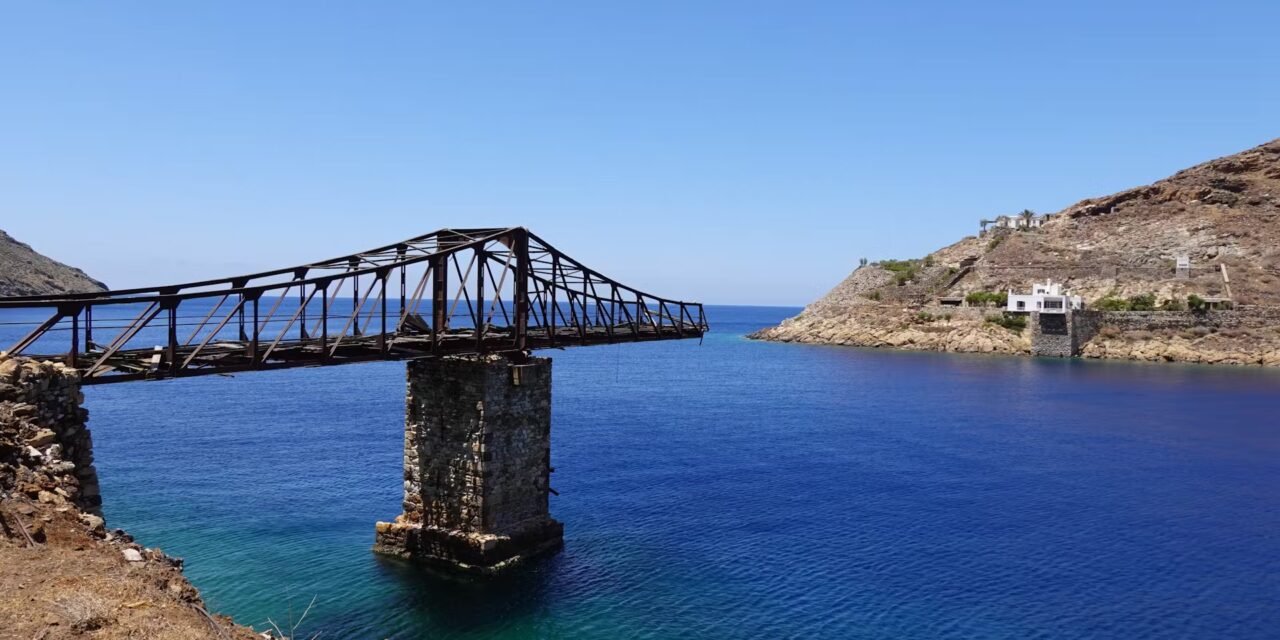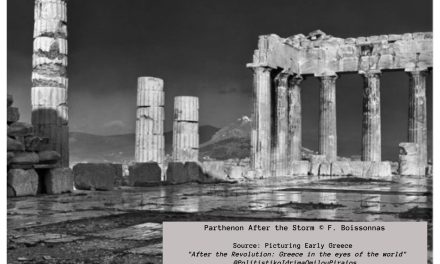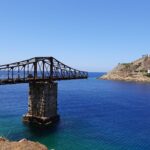Serifos, a small island in the western Cyclades, has a long history tied to its iron and copper mines, which brought prosperity from ancient times. After the end of the Greek Revolution in 1830, mining resumed on a large scale, focusing on surface iron deposits and boosting the local economy — albeit under harsh and unsafe conditions. During this period, the island’s population increased by approximately 2,000 people, as workers arrived from other Aegean islands (Paros, Karpathos, Amorgos, etc.) as well as from other regions of Greece (e.g., the Peloponnese) to work in the mines. In August 1916, miners went on strike to improve dangerous working conditions, demand fair wages, and establish the eight-hour workday. Following violent clashes, the mining company was forced to implement improvements. This strike became a landmark moment in the Greek labor movement. Mining eventually declined as resources were depleted, and today, no mining operations remain on the island (Cover photo: The loading bridge at Megalo Livadi, Source: serifos.gr/en). Serifos is now renowned for its beautiful beaches and for having one of the most picturesque Chora (capital town) in the Aegean.
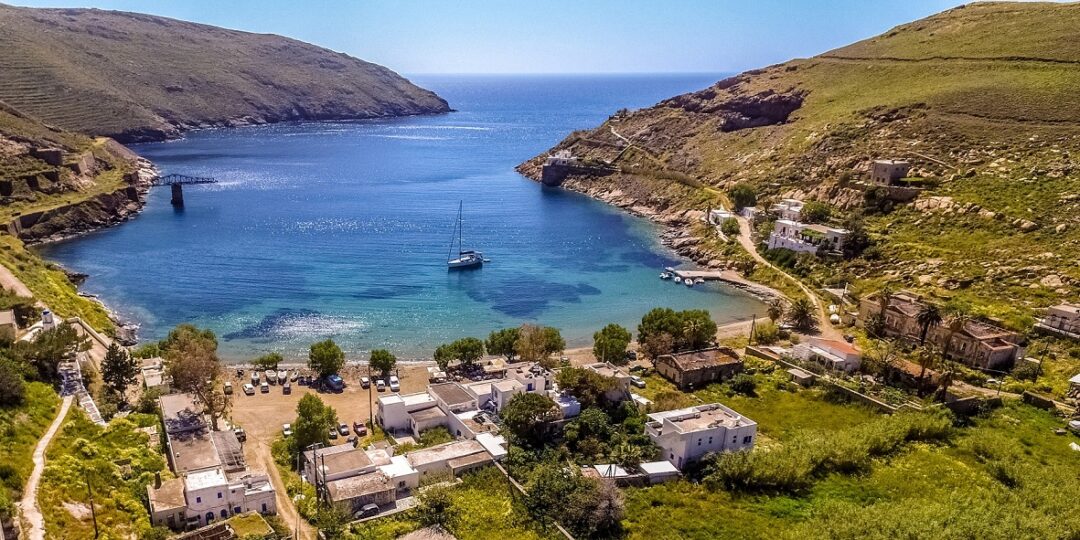
Megalo Livadi is a village that developped around a sheltered bay in the southwest of the island in 1880, during the peak of Serifos’s mining activity. The village featured workers’ homes, a police station, a chemical laboratory, grocery stores, cafes, taverns, and a primary school (operating between 1900 and 1914). In 1890, the offices of the Serifos Spilialeza company, which exploited the island’s mines, were relocated here. They were housed in a neoclassical administrative building known as “Dioikitirio” designed in the style of the famous German architect Ernst Ziller. The building’s ruins still stand at the edge of the beach and are currently undergoing restoration (at the right side of the photo above, Source: serifos.gr/en). Nearby stands the Miners’ Memorial, which honors those who lost their lives during the 1916 labor strike. Remnants of the mining era – including galleries, loading bridges, wagons, rail tracks, and building ruins – can still be seen on the bay’s left side.
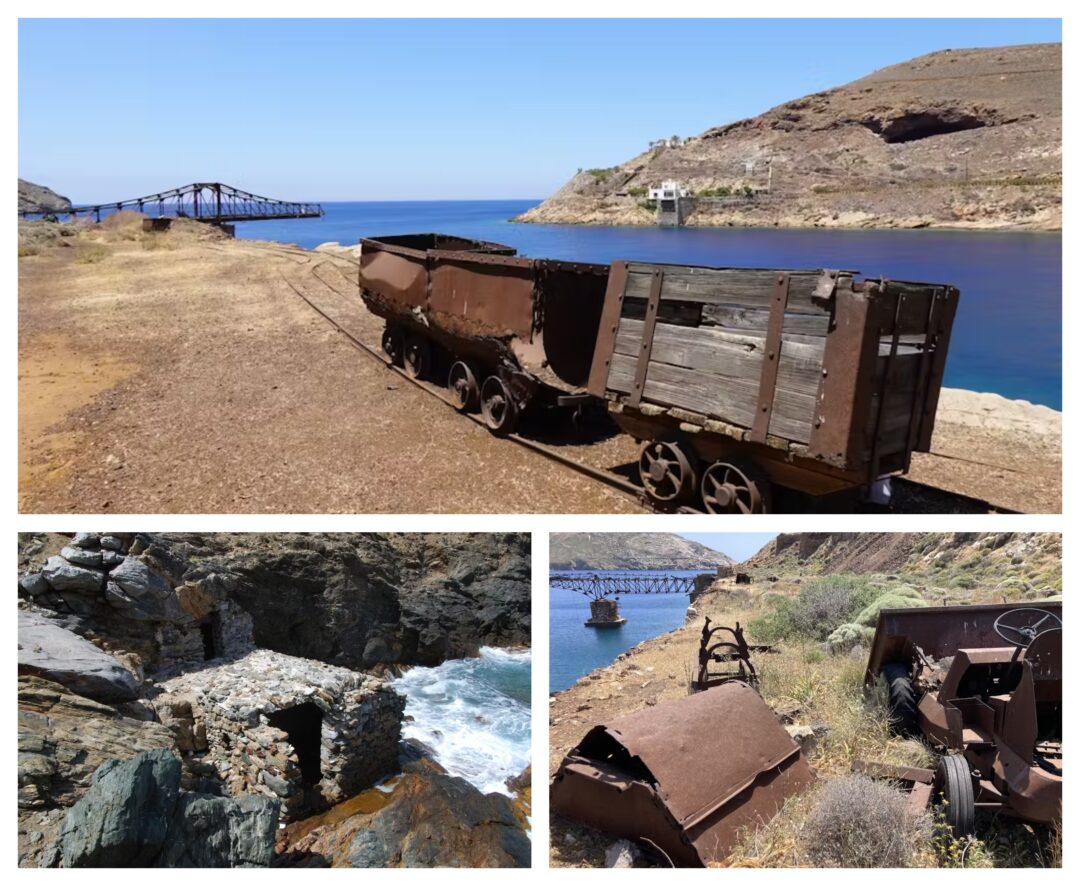
Historic mining carts near Megalo Livadi loading bridge (upper, Photo: Or. Karamanlis), The Almyros Bathhouse, built in 1898, stands on the rocky coastline of the bay of Mega Livadi, and remains well-preserved despite constant exposure to sea winds and waves. The baths were used by the workers for therapeutic purposes (lower left, Photo: D. Mavrokordatou), Remains of mining equipment at Koutalas loading area (lower right, Photo: V.Pougkakioti) (Source: www.wmf.org/monuments/serifos-historic-mining-landscape)
Serifos’ historic mining landscape in the island’s southwest has been added to the World Monuments Fund’s (WMF) 2024 Watch List for endangered cultural heritage. The inclusion highlights the site’s vulnerability due to tourism development plans. “The island’s historic mining relics, including loading stairs in Megalo Livadi and Koutalas, face deterioration without protective measures”. “Serifos has an invaluable industrial heritage requiring protection to prevent its loss,” the WMF emphasized. Local archaeologist Ourania Vizyinou explained that the local community initiated this nomination after years of concern for the site’s preservation and that it was backed by the National Technical University of Athens and the University of the Aegean. Professor Ioannis Spilanis of the Aegean University said, “We trust this listing will drive collaboration between the Culture Ministry and local stakeholders to preserve the site and its history” (Source: ekathimerini.com)
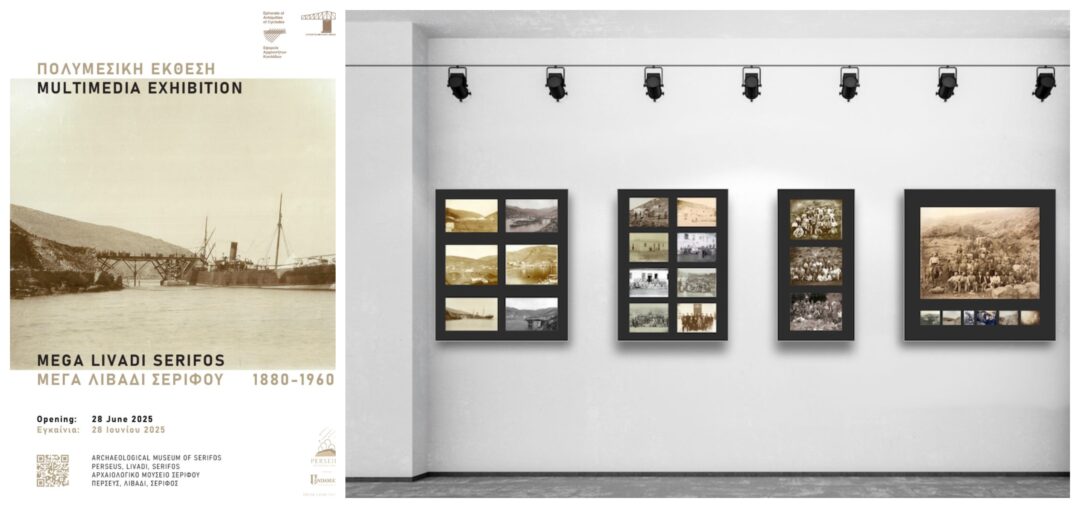
The Ephorate of Antiquities of the Cyclades, in collaboration with the Cultural Association of Megalo Livadi Serifos and Assistant Professor Orestis Karamanlis (National and Kapodistrian University of Athens), is organizing a multimedia exhibition in summer 2025 titled “In the Years of Modern Mining Activity: Megalo Livadi, Serifos 1880–1960”. The exhibition aims to highlight the unique identity and modern history of the area through its mining activity, as well as its intangible cultural heritage. It features AI-restored historical photos, rare press material, and archival content from the municipality, the miners’ association, and local residents. The project seeks to uncover the often-overlooked recent past of Serifos – particularly of Megalo Livadi – while engaging both residents and visitors with this heritage. It also encourages awareness of the area’s dinstict identity and promotes collaboration toward a better-managed and more sustainable future for Serifos (Source: cyclades.culture.gov.gr, exhibition25.megalivadi.org/)
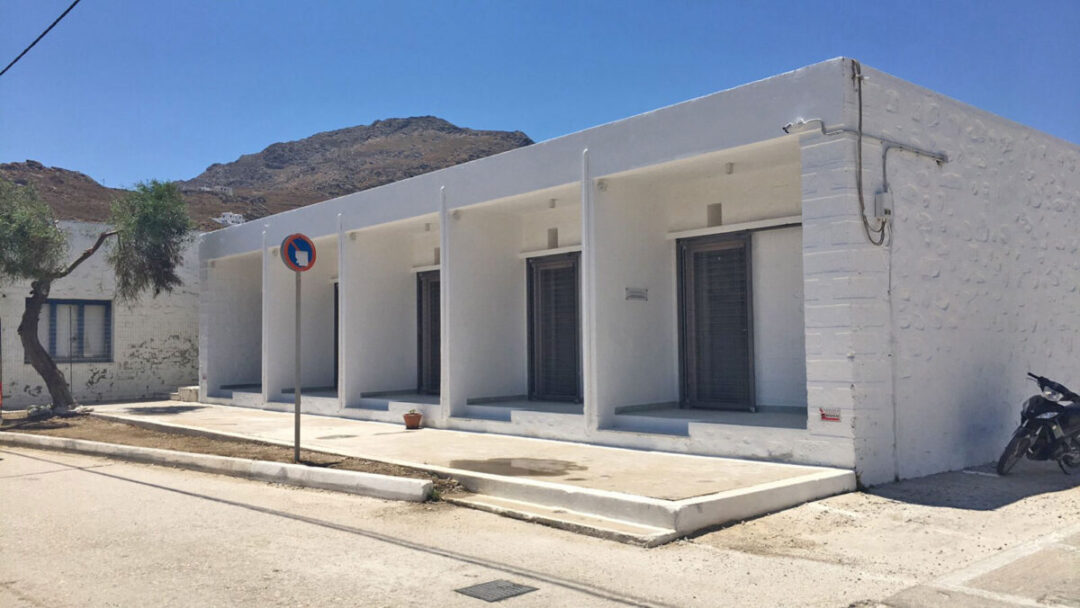
The exhibition is hosted at the Archaeological Museum of Serifos, housed in the former Municipal Hostel “Perseus,” a building designed by architect Philippos Vokos between 1962 and 1963. It is a typical example of modernist architecture, reflecting the distinctive typology of the Xenia hotels—a network of publicly owned accommodations built in Greece during the 1950s and 1960s as part of a government initiative to develop the country’s tourism infrastructure. (Source: cyclades.culture.gov.gr)
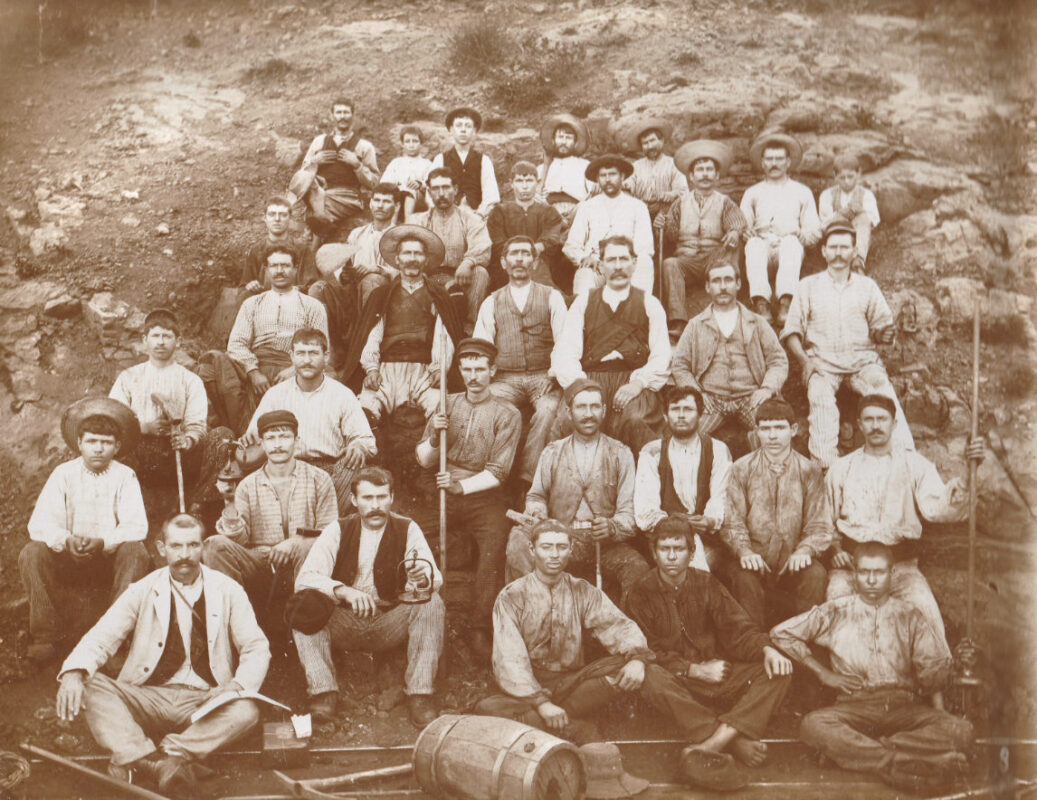
Workers at the mines of Serifos, late 1880s (Photo: National Historical Museum of Athens, Source: exhibition25.megalivadi.org/).
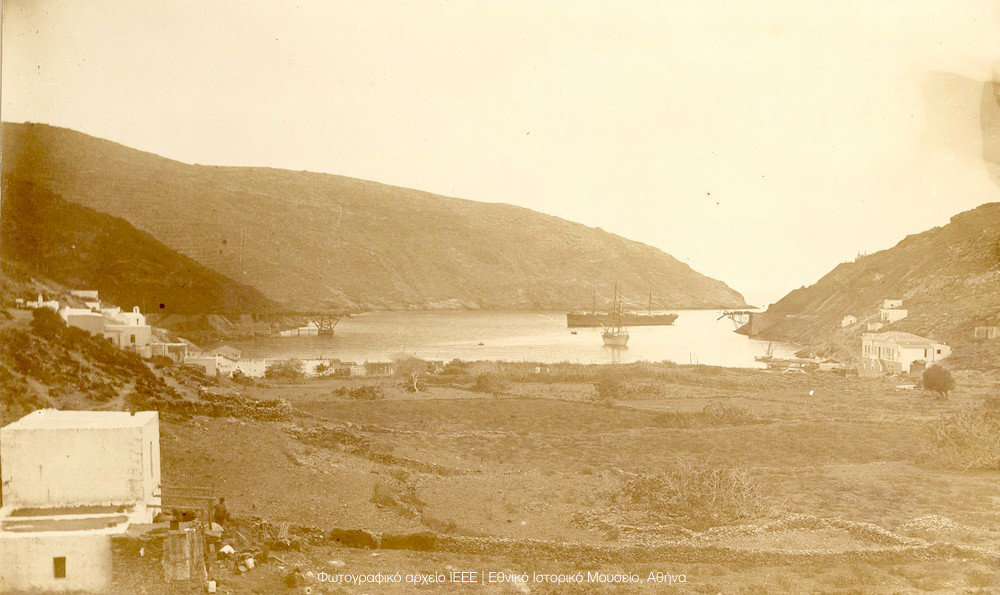
Megalo Livadi in the late 1880s. Visible are the two ore loading ramps, one at the right and one at the left end of the bay. The elongated neoclassical building on the right is the Dioikitirio, the residence of the German mining contractor Emile Grohmann (Photo: National Historical Museum of Athens, Source: exhibition25.megalivadi.org/).

The exhibition about the island’s Modern Mining Activity enters into dialogue with Bob McCabe’s photographic exhibition “The Magic of Serifos”, which will also remain open to visitors this summer (photos above)
Serifos is an island with a glorious history, and a distinct character character of its own. Visitors are struck by the serenity of the landscape, as all the senses become attuned to its natural beauty. Composed of iron and granite, Serifos is the rockiest island in the Cyclades. Although arid, it boasts some of the most beautiful beaches in the Aegean Sea. The island’s villages are built in the traditional Cycladic style: whitewashed houses with brightly colored window frames that harmonize beautifully with the surrounding landscape.

In Homer’s Odyssey, it is said that the island of Cyclops Polyphemus was Serifos, and that his residence was the “Cave of Cyclops”, located beneath the “Throne of Cyclops” near the settlement of Megalo Livadi (phohto left, Source: e-serifos.com). According to the myth, Perseus arrived on the shores of Serifos with his mother, Danae, locked in a chest. To punish Polydectes, King of Serifos, Perseus killed the Gorgon Medusa – a mythical creature with living snakes for hair – and showed her severed head to Polydectes, who was instantly turned to stone. Perseus then lay down to rest. However, the frogs of Serifos, with their relentless singing, would not let him sleep. Annoyed, he asked Zeus to silence them. This story gave rise to the ancient expression “Serifian frog”, which was used pejoratively to mock someone who lacked rhetorical skill. The archaic silver stater of Serifos (c. 580 BC), was based on a pun referencing the “Serifian frog” (photo right)
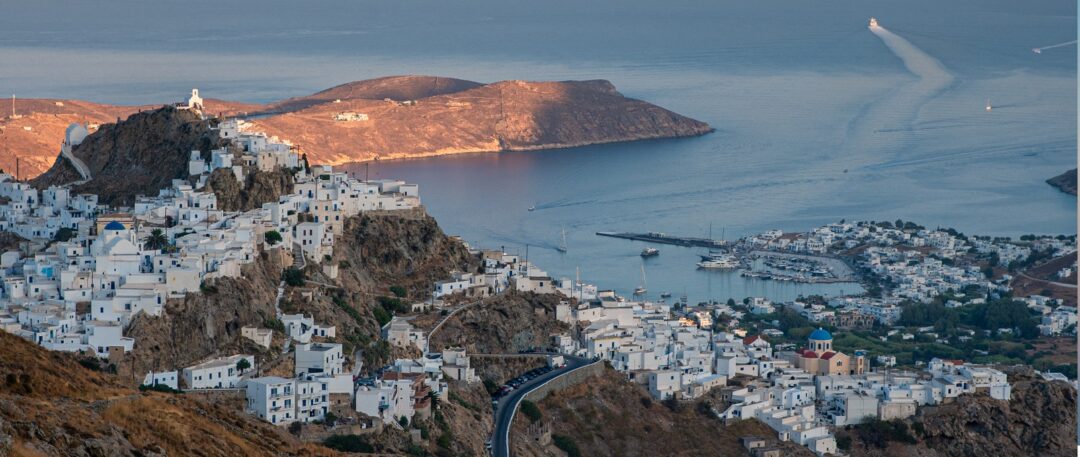
Chora is among the most beautiful villages in the Cyclades. Small whitewashed houses cover the rocky hillside overlooking the cove and Livadi, the island’s port. The village consists of two neighbourhoods – Pano Chora (Upper Chora, also known as Castro, meaning Castle) and Kato Chora (Lower Chora) – connected by a series of stairways. The entire layout of the town exudes harmony and elegant simplicity. The castle was constructed by the Venetians in the 15th century on the ruins of an ancient settlement. Upon reaching the top, where picturesque chapels stand, visitors are rewarded with breathtaking views of the vast blue sky and the equally blue sea below. At the Piatsa, the marble-paved square in the heart of Ano Chora, stands the beautiful neoclassical Town Hall, built in 1907. (Source: visitgreece.gr)
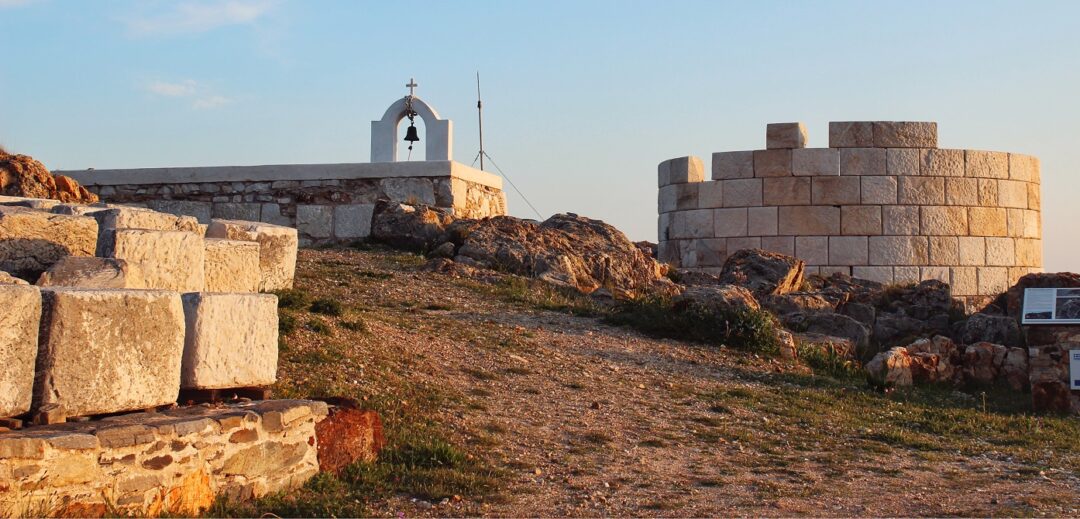
The White Tower (Aspros Pyrgos), a circular marble structure of the Late Classical to Hellenistic period, is a significant monument, dated between the 4th and the 3rd centuries BC. Built from large white marble blocks, it originally stood about 12 meters high and included a ground floor and two upper levels arranged in a circular layout. Today, only a portion of the structure survives, with a maximum remaining height of nearly 5 meters. Its architectural features, along with the panoramic view from its location, suggest it was used as an observatory. In the late 19th century, a small cemetery and a church dedicated to Agios Charalambos were established nearby, incorporating marble stones from the ancient tower into their construction. (Source: serifos.gr/en)
Serifos is renowned for having some of the most beautiful beaches in the Aegean, with over 70 scattered along its intricate, lacy coastline. The island is dotted with numerous small and larger bays, accessible on foot, by road, or by boat—inviting visitors to explore and discover their own slice of paradise. Most of the island’s beaches remain unorganized and naturally preserved, retaining their timeless, untouched beauty. (Source: serifos.gr/en/paralies/)
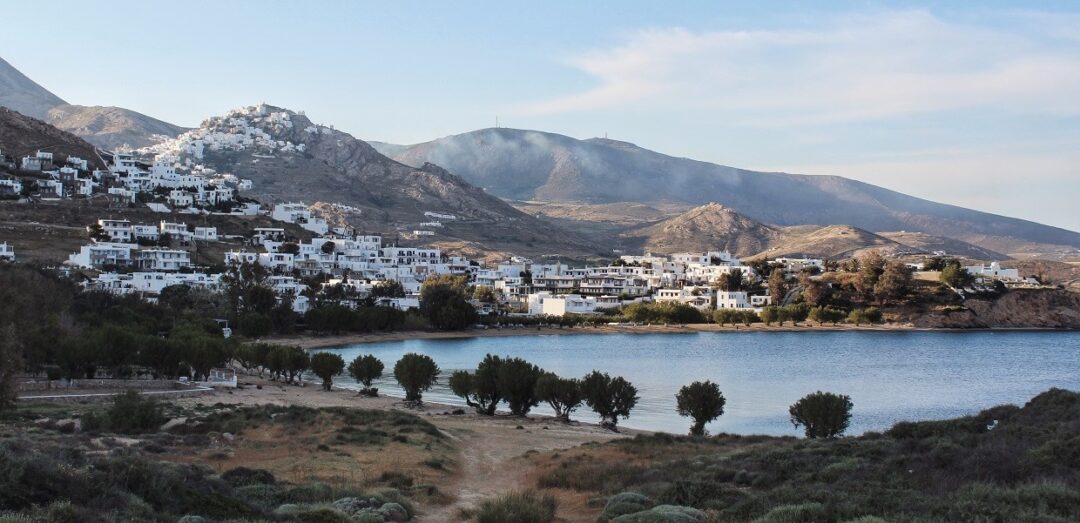
Livadakia is located just below the settlement of the same name, next to the port on the south side of the island. It is home to the only organized campsite on Serifos. The golden sandy beach is shaded by numerous tamarisk trees, providing a pleasant spot for visitors to relax. (Source: serifos.gr/en)
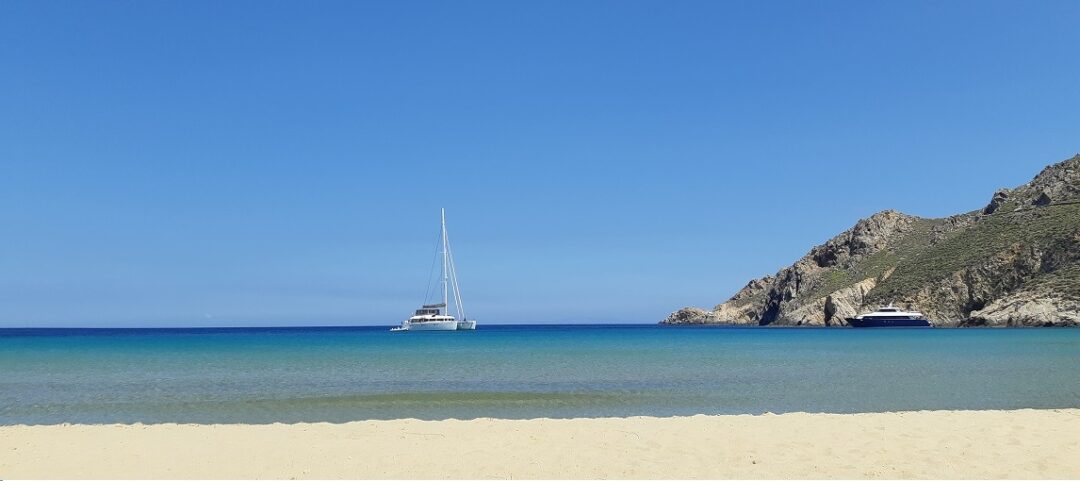
Psili Ammos is considered the most famous beach on the island and was named the best beach in Europe by The Sunday Times in 2003. Its turquoise waters and fine golden sand create a dreamy setting. The shallow waters make it ideal for carefree family moments, while plenty of tamarisk trees provide ample shade during the summer months. (Source: serifos.gr/en/)
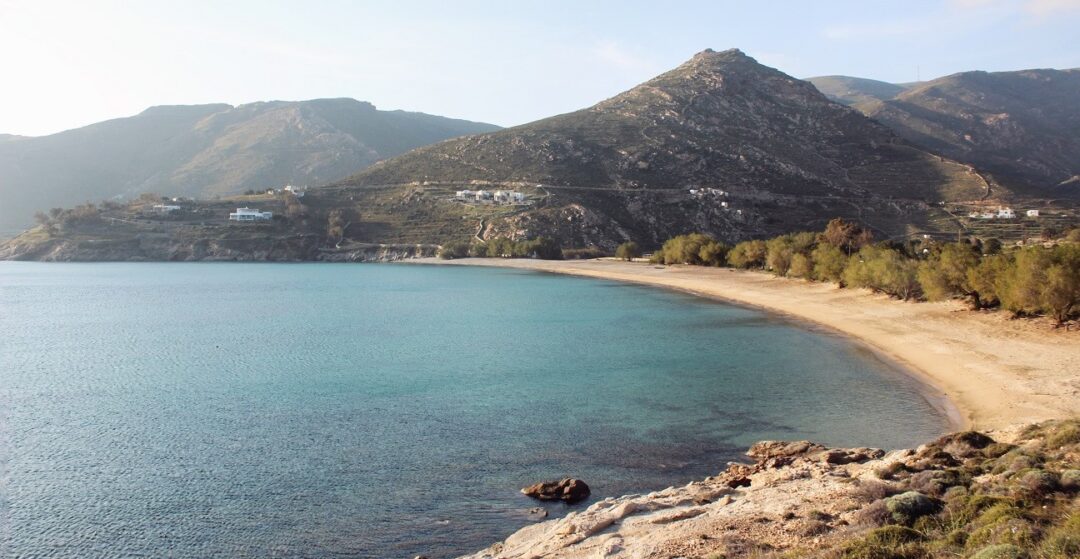
Ganema is one of the largest and most picturesque beaches on Serifos, located on the south side of the island. Known for its crystal-clear waters, dark sand, and abundant tamarisk trees lining the shore, it is considered one of the island’s most beautiful beaches. At sunset, the sun dipping into the sea creates one of the most breathtaking moments of the day. (Source: serifos.gr/en)
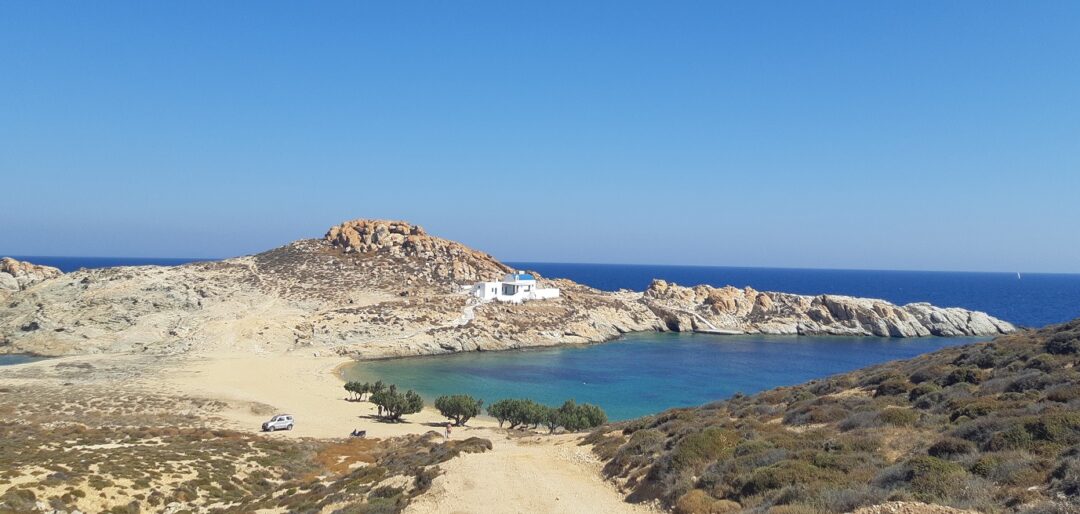
The beach of Agios Sostis is located on the east side of the island and takes its name from the chapel of the same name, situated on the nearby cape. It is arguably the most picturesque beach on Serifos—a small bay of exceptional natural beauty, shaded by a few tamarisk trees. (Source: serifos.gr/en)
Read also:
Cycladic architecture, stunningly blending with the endless blue of the Aegean sea
I.A.
TAGS: AEGEAN | ARCHITECTURE | HERITAGE | TECHNOLOGY | TOURISM

